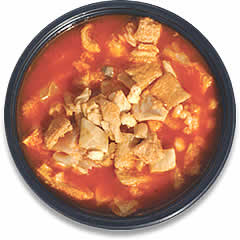
1) Tripe – what is it?
Within the uncomplicated appearance tripe can be said as stomach (or stomachs) of a domesticated animal. Generally primary three stomachs of a cow are utilized and at times of a pig or sheep stomach can also be used. The initial of the cow’s stomach is the "blanket" tripe, following and most favorite is the "honeycomb" tripe and third usable stomach is the "bible" or "book" tripe. The very last stomach of a cow is infrequently used because of its glandular texture.
2) How is Tripe Prepared? :-
Classification of tripe to be suitable for eating, it must be systematically cleaned. A butcher must also eliminate further bit of chubby and peroxide it, therefore making it look more appetizing. The stomach is boiled temporarily so that the coating can be peeled off. Lining of the stomach is the definite part that is used. Clean tripe is a brownish/greenish khaki color. Yet it doesn't appear rather as tasty, unbleached and uncooked tripe will have more savor. When you get the tripe home it is important to rinse the tripe thoroughly until the water runs clear and there is no residual grittiness. Tripe requires to be cooked for a long time in order to become tender. Simmering it for 2-3 hours is usually sufficient.
3) Tradition in Mexican Cuisine:-
Tripe in Mexico is used for loads of dishes but the most admired one is Menudo which is a soup made with hominy and honeycomb tripe.
4) Gastronomic convention:-
Tripe has been used in almost every country around the world in all kinds of dishes from main dishes to cold salads. In Italy you can enjoy "Trippa alla Fiorentina" in tomato sauce and in Belgium "Tripes a Djotte" a tripe sausage encased in large intestines. Even the well known "Andoille" sausage from France is tripe. In the Southern US it is deep fried in a buttermilk batter.
No comments:
Post a Comment